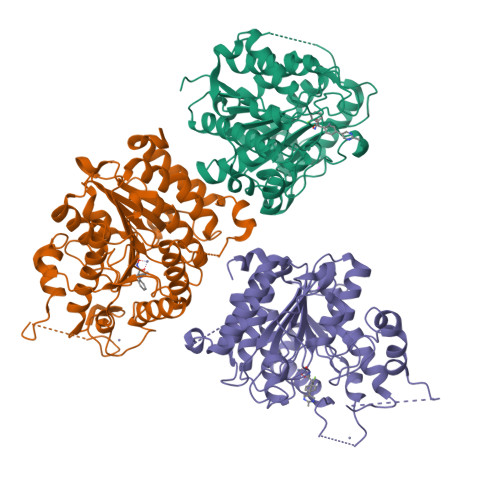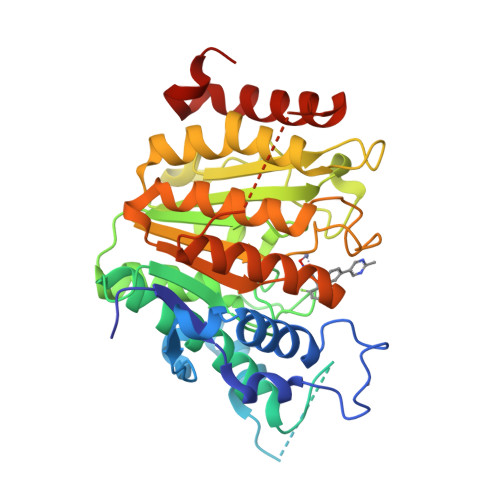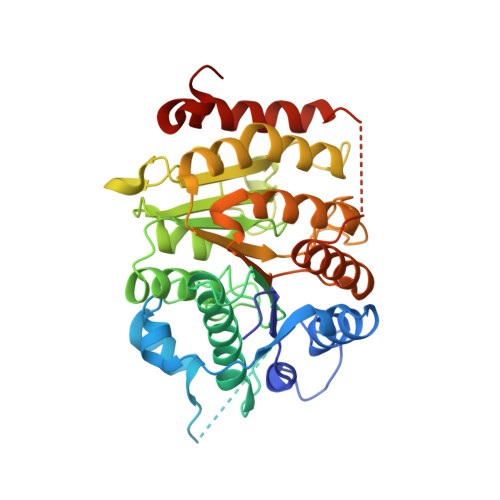Development and characterization of a CNS-penetrant benzhydryl hydroxamic acid class IIa histone deacetylase inhibitor.
Luckhurst, C.A., Aziz, O., Beaumont, V., Burli, R.W., Breccia, P., Maillard, M.C., Haughan, A.F., Lamers, M., Leonard, P., Matthews, K.L., Raphy, G., Stott, A.J., Munoz-Sanjuan, I., Thomas, B., Wall, M., Wishart, G., Yates, D., Dominguez, C.(2019) Bioorg Med Chem Lett 29: 83-88
- PubMed: 30463802
- DOI: https://doi.org/10.1016/j.bmcl.2018.11.009
- Primary Citation of Related Structures:
6FYZ - PubMed Abstract:
We have identified a potent, cell permeable and CNS penetrant class IIa histone deacetylase (HDAC) inhibitor 22, with >500-fold selectivity over class I HDACs (1,2,3) and ∼150-fold selectivity over HDAC8 and the class IIb HDAC6 isoform. Dose escalation pharmacokinetic analysis demonstrated that upon oral administration, compound 22 can reach exposure levels in mouse plasma, muscle and brain in excess of cellular class IIa HDAC IC 50 levels for ∼8 h. Given the interest in aberrant class IIa HDAC function for a number of neurodegenerative, neuromuscular, cardiac and oncology indications, compound 22 (also known as CHDI-390576) provides a selective and potent compound to query the role of class IIa HDAC biology, and the impact of class IIa catalytic site occupancy in vitro and in vivo.
Organizational Affiliation:
Charles River Discovery (previously BioFocus), Chesterford Research Park, Saffron Walden, Essex CB10 1XL, United Kingdom.























